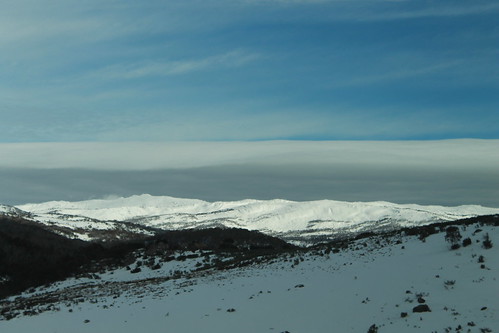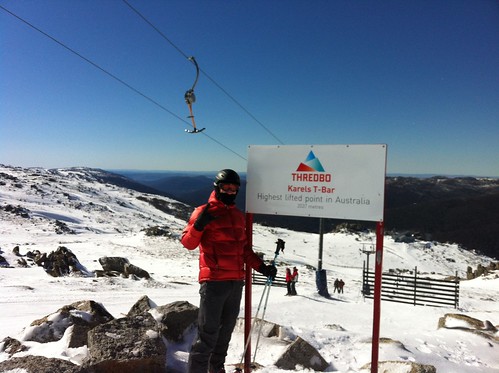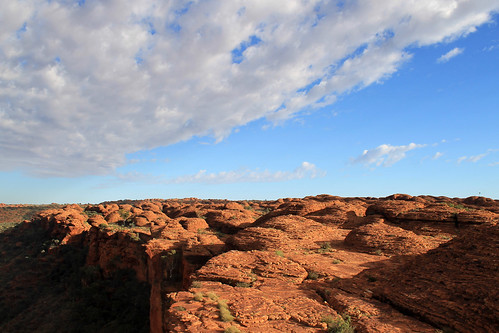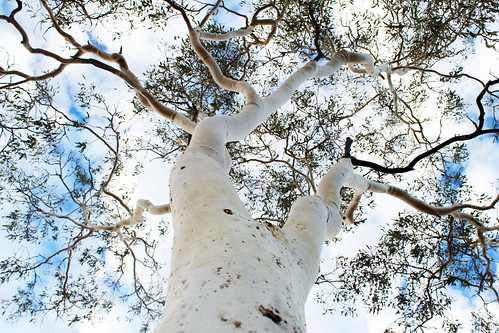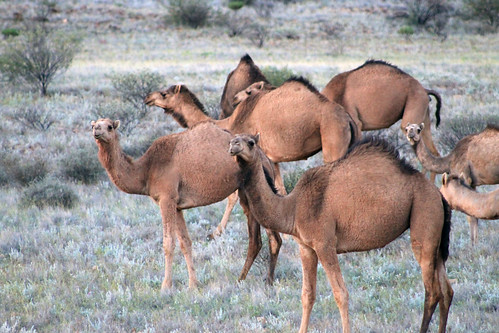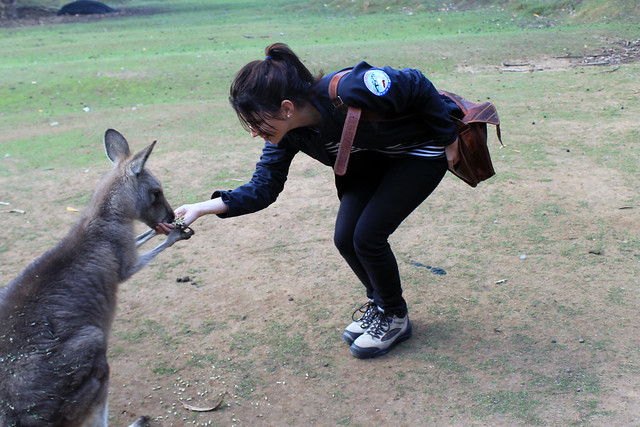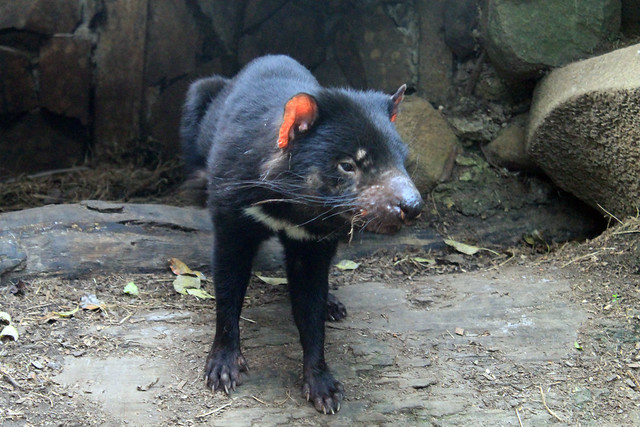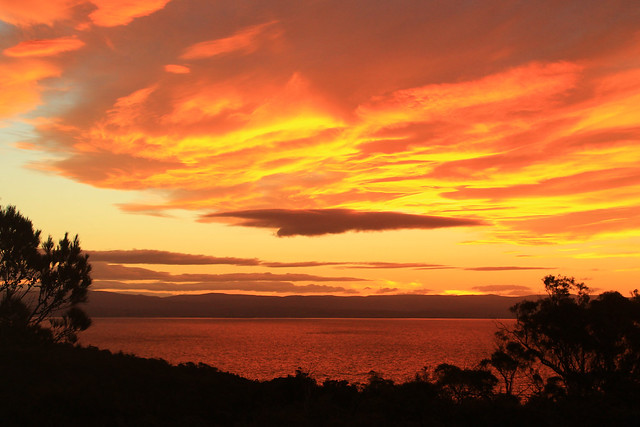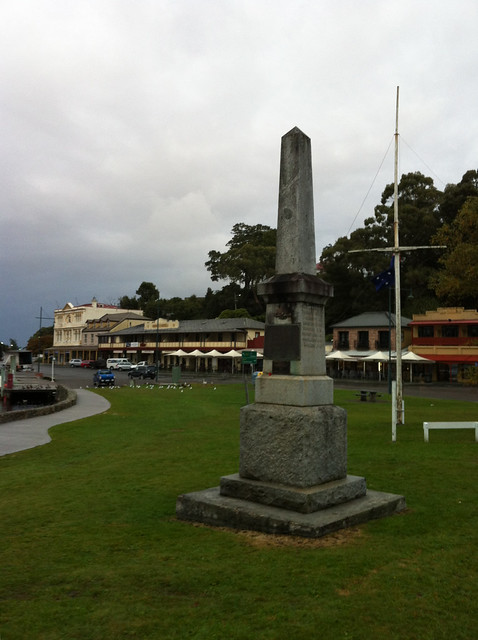Travel Date: 18 August 2013
It was a rough morning trying to wake up on time and be out
in front of the YHA Alice Springs in time to be picked up for my 3-day
adventure in the Outback. Though I originally wanted to rent a 4WD and do the
trek from Alice Springs to Uluru with friends, I wasn’t able to convince any of
my friends to come along on this trip with me and I sure as hell wasn’t about
to tempt fate by doing it on my own because with some of my travel luck, I’d
inevitably get bogged down in some sand, run out of water, and get bitten by a
snake trying to find a cell signal! So I booked a 3-day tour of some of the Outback’s
most famous sites.
WayOutback tours offer a number of trips ranging from 3 days
to over a week, some of which are more rugged than others. The one I’d booked
was “all inclusive” in the sense that all food was provided for, sleeping
arrangements were already made, and all I had to do was show up, sit down in the
bus, and enjoy the scenery. Soon enough, a big…truck? I’m not entirely sure how
to describe it. It was a vehicle that had the front cab of a small semi-truck
and instead of a cargo hold on the back, it had a relatively small coach like a
charter bus with big windows and two seats on either side. The bus accommodated
24 people and was jacked up on big 4WD tires.
Our driver, Adam, helped the two of us being picked up put
our luggage in the storage hold on the back of the bus. It took us a while to
pick up everyone else from their respective hotels and hostels around Alice
Springs, but soon enough we had a nearly full bus with people from all over the
world: an American girl, her father, and her Swedish friend, a hip-hop dance
teacher from Amsterdam, a girl from Glasgow, an adventurous guy from Vancouver,
and your typical handful of German and French backpackers.
The bus was chatty at first as we all were introducing
ourselves and going through the typical banter common amongst backpackers in
Australia, but it was still pitch black out and we had a good 6-hour drive
ahead of us and soon enough everyone was sleeping.
The thing anyone needs to know about the Northern
Territories is that there are very very few towns and everything is incredibly
far apart! When you drive down the highway and come across a petrol station or
bathroom, you stop and fill up and use the bathroom because you never know
where the next one will be. Between the towns are small roadhouses that usually
have a gas station, some hotel rooms, camping spots, toilets, and a bar.
 |
| Sleeping dingo at the Stuart's Well Roadhouse south of Alice Springs |
Our first stop was at one of these roadhouses, the Stuart’s
Well Roadhouse, and it was the first chance we had to stretch our legs, and
grab a coffee. This roadhouse was unique in that it also had a number of pens
where Australian animals like emu, kangaroos, and various birds were on display
for tourists stopping in. But they also had two of the more unique sights in
the Outback: camels and a dingo. Camels are obviously not native to Australia,
but were imported from the Middle East because of their hardy survivalist
instincts in desert environments and the preferred cargo animal over horses,
which require a lot of water. A transcontinental telegraph cable was built from
Adelaide to Darwin with Alice Springs being used as a transfer point along the
way. Camels were used by the crew that laid down the cable. But like many
non-native animals in Australia, some of the camels escaped and proliferated in
the desert and today there are over one million wild camels roaming Western
Australia and the Northern Territories. Dingoes were also introduced to
Australia over 40,000 years ago and have also adapted and proliferated
throughout the continent and have just recently been described as a separate
canine species and not just a variety of wild dog. The one dingo at this
roadhouse was old and used to tourists, so was not caged up and was pretty
snoozy and docile.
Adam, our driver, didn’t let us linger too long as we still
had a long ways to go. We drove another few hours to the Erldunda Roadhouse for
another bathroom break, and turned off the Stuart Highway onto the Lasseter
Highway toward Uluru.
Most people have visions of Australia’s Outback as being
rocky with lots of sandy deserts, dry eucalypts, and brilliant soils stained
red by the rusting of iron in the dust and soil. These images are spot on what
you actually see and it is beautiful! Nothing but flat land as far as the eye
can see until a few low-lying rocky ridges or mesas rise up in the distance,
like Mt. Conner. But I was surprised at just how green it was! The trees were,
by no means, lush and foresty, but the gum trees here were not as brown and dry
as I thought they would be – really a testament to just how well-suited for
every microclimate in Australia these trees are!
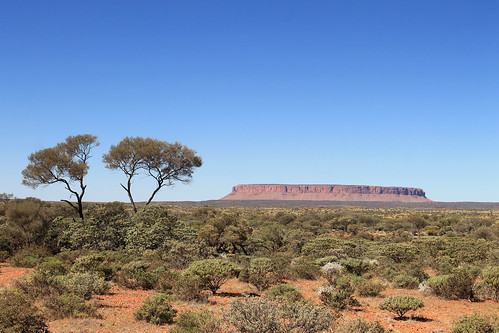 |
| Mt. Conner off in the distance near Curtin Springs |
We pulled off the main road shortly before the Curtin
Springs roadhouse to collect some firewood for our campfire that night. Part of
the reason why I booked this particular tour is that while everything was
catered for us, we still had to participate in collecting firewood, preparing dinner,
and washing up dishes. It gives you that little tinge of roughing it! Like
anything in Australia, simple tasks, like collecting firewood carry inherent
dangers. Out here, it was snakes. Some of the world’s most deadly snakes are
found throughout Australia, but exceptionally potent ones here in the Outback.
We had to be very careful when picking up dead wood that no snake was sunning
itself nearby! But soon enough we had our firewood, and we made our pit stop at
Curtin Springs, and carried on west to Uluru.
There were a lot of rocky plateaus and mesas in the distance
along the Lasseter Highway and every time we thought we saw Uluru, Adam would
shake his head and assured us and assured us, “You’ll know when you see it!”
And sure enough, another few hours down the road, the rock loomed into view,
dwarfing any and all other mesas we’d seen! Everyone knows what Uluru looks
like as it’s one of the most photographed rocks in the world. And with good
reason! It’s the world’s largest monolith – or single rock, and it juts up from
the flat Outback surroundings to over 300 m in height. We kept driving closer
and closer and Uluru kept getting bigger and bigger. Finally, we pulled into
our campsite in Uluru-Kata Tjuta National Park.
I couldn’t wait to get up close with the massive rock, but
it was going to have to wait a bit. A few more people were joining our tour,
but were flying directly in to the airport at Uluru, rather than Alice Springs,
so Adam gave us directions for lunch and he left to pick up the others. Soon he
came back with a French family that had a few kids with them, and a blonde girl
from Canada who was finishing up teaching fashion at a school in the Melbourne
area. I’m not entirely sure if she knew what she was signing up for. Everyone
else was dressed in hiking and outdoor gear and those of us who’d collected
firewood were already covered in dust, whereas the Canadian fashionista rocked
up in a flowy sequined top, hair done up like a pro, and flip flops more
appropriate for a cocktails near the beach than heavy walking in the Outback!
With lunch in our stomachs, Adam gave us the cultural
sensitivity talk about Uluru. The rock features in numerous Aboriginal stories
about Tjurkupa – the creation time of the world – and is a very sacred site as
it is the birthplace of the Anangu people who still reside at Uluru. As
European Australians had a penchant to do, they named the rock after the Chief
Secretary of South Australia (Ayer’s Rock) and it became known as Ayers Rock –
Mount Olga National Park, under the government of the Northern Territories
until 1985 when the park was given back to the traditional owners of the land
and renamed Uluru – Kata Tjuta National Park. One of the most popular things to
do at the park is to climb to Uluru’s summit and there is only one trail to the
top, but because of Uluru’s sacred importance to the Aboriginal communities,
doing the climb is not recommended by any of the tour companies who have access
to the park, though they all allow the tourists the option.
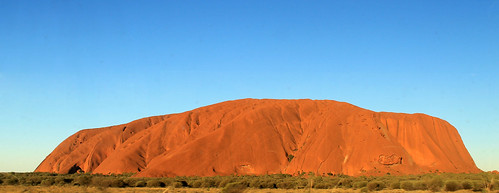 |
| Finally here! Uluru! |
As a geologist and someone who loves a good hike, I was
really tempted to do the climb, but when our bus pulled into the parking lot
and we saw a full charter bus-full of tourists swarming up the trail to the
summit and I just felt sick from the blatant disrespect for this sacred site. A
small group from our bus decided to do the hike, and I understand their
decision, but I thought that in the long-run, I’d feel better knowing that I
hadn’t tread on sacred ground without fully understanding its importance to the
local people. Thousands of people do the climb each year and some of them even
feel the need to pick up a little stone and take it home as a souvenir from
Uluru. In the National Park’s Visitor Centre, though, there is a binder full of
letters from people who, after taking the stones from Uluru, experienced so
much bad luck and racked with guilt that they mailed the stone back to the park
in an effort to rid themselves of their curses. These small rocks are now
collectively known as Sorry Rocks.
While the hikers did the climb, the rest of us did the short
Mala Walk to Kantju Gorge. Uluru has a lot of curves creating alcoves along its
base which are perfect for allowing water to pond and gives the appearance of
little oases in the Outback. The Mala Walk took us past a number of sites that
are featured in the creation stories of the local Anangu people. Some of the
rock caves at Uluru’s base contain carvings and petroglyphs that are thousands
of years old. The trail leads you to Kantju Gorge which features a small water
hole at the base of a cascade of steps that have eroded into the steep sides of
the rock over millennia.
By the time we got back to the parking lot, the hikers
hadn’t yet returned, so the rest of us drove around to the Mutitjulu Waterhole
around the other side of the rock where there is an even bigger waterhole and
forms in the rocks tell the story of
Kuniya, a python woman who had traveled from
the east. Kuniya’s nephew had been killed by the Liru, poisonous snakes. When Kuniya
arrived, she exacted revenge for her nephew by taking her walking stick and striking
the Liru with it, killing him.
The day was getting on and sunset wasn’t far away. Next to
the Uluru climb, one of the most popular events every day is to watch the
sunset on Uluru. The bright orange sandstone takes on a new life as it’s
shadows and colours change in the dimming light. Our bus pulled into a parking
lot that was just
swarming with tour
buses and vans, each with their own cohorts of tourists sitting around
make-shift tables while everyone sipped on champagne and snacked on
finger-foods while watching one of the most beautiful sunsets in the world. The
bright orange rocks faded in and out of various hues of red and pink as the sky
behind it darkened. The shadow of the western horizon slowly works its way up
the rock until the final moment when the only the tip of the rock is
illuminated a gentle pink colour before the shadow envelops the entire rock.
Even with all the people around, I was able to take a little walk down a path
where there were far fewer people and the whole sunset just becomes a peaceful
experience leaving little doubt that this gigantic rock is indeed an intensely
spiritual place.
With the sunset over, we bussed back to our campsite where
some of our group got a campfire started so we could cook dinner while the rest
of us started to prepare our beds. There were large stationary tents at the
site, but the weather was wonderfully mild and we all had the option of
sleeping in swags under the stars. Swags are nothing more than a big canvas bag
that has a rough sleeping pad inside and you then put your sleeping bag in the
swag on the pad. A canvas flap can then be pulled over your head in case it
were to rain. Swags feature heavily in Australian culture, most notably in the
song “Waltzing Matilda” in which Matilda is actually the name of the man’s
swag! I don’t think I ever met a respectable Australian who didn’t have a swag
or hadn’t spent a night in one. Being in the middle of the Outback, at Uluru,
there was, for me, little choice about spending a few nights sleeping under the
countless stars in my swag.
With our stomachs full of food and beer, it wasn’t long
before everyone was comfortably in their swags (or uncomfortably in the case of
our Canadian fashionista!) and fast asleep. It wouldn’t be too long, after all,
before we would wake up at 4 am for our next day’s worth of amazing Outback
experiences!
